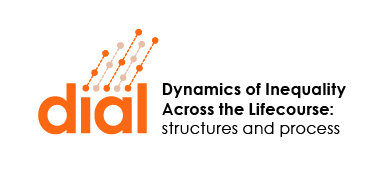We review results concerning the representation of partial orders of univariate distributions via stochastic orders and investigate their applications to some classes of stochastic dominance conditions applied in inequality and welfare measurement. The results obtained in an unidimensional framework are extended to multidimensional analysis. We discuss difficulties arising from aggregation of multidimensional distributions into synthetic … Read more
From unidimensional to multidimensional inequality: a review
Inference for the neighbourhood inequality index
The neighborhood inequality (NI) index measures aspects of spatial inequality in the distribution of incomes within a city. It is a population average of the normalized income gap between each individual’s income (observed at a given location in the city) and the incomes of the neighbours located within a certain distance range. The approach overcomes … Read more
Robust cross-country analysis of inequality of opportunity
International rankings of countries based on inequality of opportunity indices may not be robust vis-à-vis the specific metric adopted to measure opportunities. Indices often aggregate relevant information and neglect to control for normatively irrelevant distributional factors. This paper shows that gap curves can be estimated from cross-sectional data and adopted to test hypotheses about robust cross-country comparisons … Read more
Urban poverty: Measurement theory and evidence from American cities
We characterize axiomatically a new index of urban poverty that i) captures aspects of the incidence and distribution of poverty across neighborhoods of a city, ii) is related to the Gini index and iii) is consistent with empirical evidence that living in a high poverty neighborhood is detrimental for many dimensions of residents’ well-being. Widely … Read more
Application of the EU-SILC 2011 data module “intergenerational transmission of disadvantage” to robust analysis of inequality of opportunity
This data article describes the original data, the sample selection process and the variables used in Andreoli and Fusco (Andreoli and Fusco, 2019) to estimate gap curves for a sample of European countries. Raw data are from 2011 roaster of EU-SILC, cross-sectional sample of module “intergenerational transmission of disadvantage”. This article reports descriptive statistics of … Read more
Robust Cross-country Analysis of Inequality of Opportunity
International rankings of countries based on inequality of opportunity indices may not be robust vis-à-vis the specific metric adopted to measure opportunities. Indices often aggregate relevant information and neglect to control for normatively irrelevant distributional factors. This paper shows that gap curves can be estimated from crosssectional data and adopted to test hypotheses about robust … Read more
